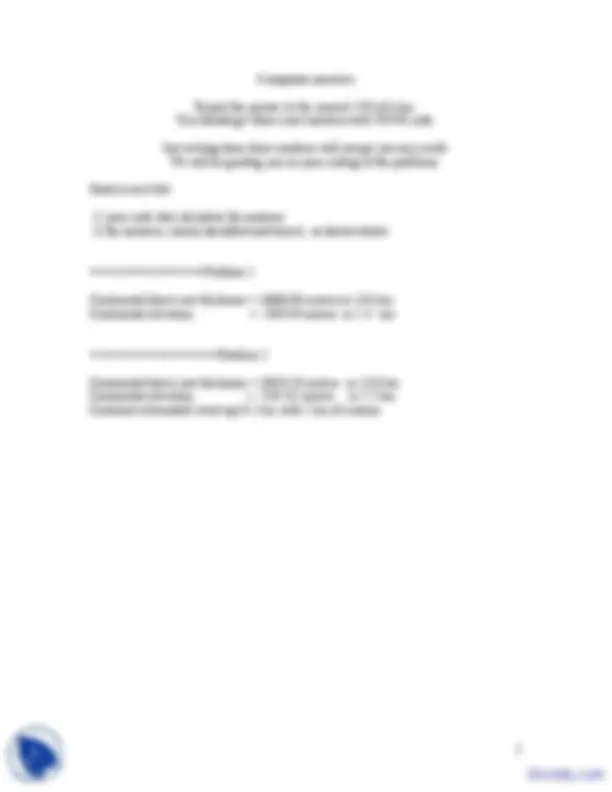



Study with the several resources on Docsity

Earn points by helping other students or get them with a premium plan


Prepare for your exams
Study with the several resources on Docsity

Earn points to download
Earn points by helping other students or get them with a premium plan
Community
Ask the community for help and clear up your study doubts
Discover the best universities in your country according to Docsity users
Free resources
Download our free guides on studying techniques, anxiety management strategies, and thesis advice from Docsity tutors
During the course work of we done some practical in the lab, The key points are:Isostasy, Program, Thickness, Mountain Root, Elevation, Layer Densities, Layer Thicknesses, Sea Level Defines Zero, Crust, Air
Typology: Exercises
1 / 2

This page cannot be seen from the preview
Don't miss anything!


Introduction to geophysics Isostasy Lab
Name:___________________________
ρa = 0.0 g/cm^3 air ρc = 2.6 g/cm^3 crust ρm = 3.3 g/cm^3 mantle ρw = 1.0 g/cm^3 water
Tw = 2 km water layer Toc = 8 km ocean crust Tcc = 40 km continental crust
The height equation is: T (^) e + Tw + Toc + Tr = Tcc.
Continental block Ocean block
Tcc continental crust
Mantle Tr ρm = 3.3 g/cm^
water Oceanic crust
Te
Computer answers
Report the answer to the nearest 1/10 of a km. You should get these exact answers with YOUR code.
Just writing done these numbers will not get you any credit. We will be grading you on your coding of the problems.
Hand in next lab:
=================Problem 1
Continental block root thickness = 24606.06 meters or 24.6 km Continental elevation = 5393.94 meters or 5.4 km
===================Problem 2
Continental block root thickness = 23818.18 meters or 23.8 km Continental elevation = 5181.82 meters or 5.2 km Continent rebounded (went up) 0.2 km with 1 km of erosion.